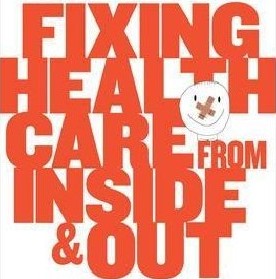Publisher” Harvard Business Review Press
Book Review by: Nano Khilnani
Orienting medical care around patients’ needs raises the quality, efficiency and value of such care, asserts Thomas Lee, a doctor who has authored the first article Turning Doctors into Leaders in this book on fixing what ails health care in America.
Usually because several specialists are involved in caring for a patient in a hospital, all of them should be communicating with one another with their primary goal of making that patient better, Lee says. But too often, they’re not talking to each other and the patient is the loser. The patient or his family members often get conflicting opinions from each doctor involved in care-giving. That is why there has to be team effort to eliminate redundancies, conflict, and unnecessary cost.
Lee points out to successes in this team approach. As examples, he cites best-practice institutions such as the Cleveland Clinic, Seattle’s Virginia Mason Medical Center, Intermountain Healthcare in Utah, and his own organization Partners HealthCare System of Boston.
The stubbornly-persistent rising cost of health care has often been pointed out as the No.1 problem afflicting health care in the United States. But none of the entities involved in giving and receiving health care is doing anything to find the solutions to lower the costs.
The national leadership has demonstrated that it does not even recognize exorbitant cost as a problem. Instead, the imperative of the new heath care law (“Obamacare”) has been just to spread the availability of healthcare. No regard has been given to what it will actually cost and how it will be paid for. This is not surprising, given that massive, annual trillion-dollar deficit-spending and debt buildup has become the norm for Barack Obama regime.
If our leaders do not give a damn for cost, why should health insurance companies care to do so? They are in business to make a profit, period. And the higher the profit, the better
The same situation exists for makers of health care equipment, who resist products that cost less and can lower the cost of health care by hundreds of millions of dollars. In Will Disruptive Technologies Cure Health Care? the authors – Clayton M. Christensen, Richard M.J. Bohmer and John Kenagy cite a very good example of this:
“Imagine a portable, low-intensity X-ray machine that can be wheeled between offices on a small cart. It creates images of such clarity that internists, nurses and pediatricians can detect cracks in bones or lumps in tissue in their offices, not in a hospital. It works through a ‘nanocrystal’ process, which uses night-vision technology borrowed from the military.”
“It could save patients, their employers, and insurance companies hundreds of thousands of dollars every year. Great innovation, right? Guess again. When the entrepreneur who developed this machine tried to license the technology to established health care companies, he couldn’t even get his foot in the door. Large-scale X-ray equipment suppliers wanted no part of it. Why? Because it threatened their business models.”
The authors cite numerous reasons why each entity involved in the use of such a smaller, lower-cost portable X-ray machine would resist its introduction.
From radiologists who may want to avoid lawsuits, to hospitals who’ve invested millions in existing equipment, to regulators afraid of putting patients at risk, to insurance companies who reimburse only established procedures, all of these throw away such opportunities to lower the cost of health care. So the problem persists.
There are other aspects of this issue discussed in this book. Read the interesting articles to gain insight into them.







